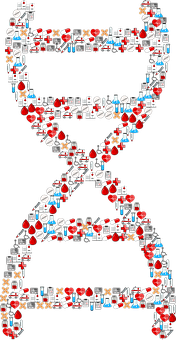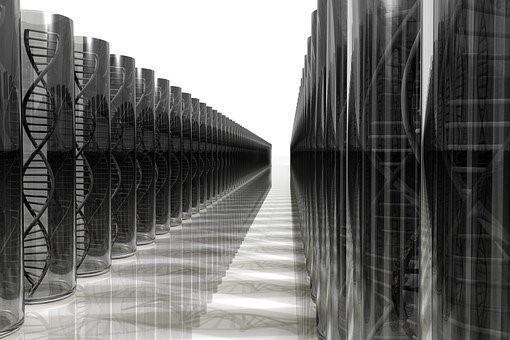What Makes Ancestry DNA Tests So Reliable

The question ‘what makes ancestry DNA testing so reliable?’ may not be an everyday one. But if you’ve ever considered ancestry DNA testing or if you’ve used the service in the past it probably crossed your mind. If you’re like most people in your position, you’ve probably wondered ‘What is it about this test that makes it so accurate in finding my biological connections using just a cheek swab or a little bit of my saliva?’ Below we explore the nature of DNA testing to provide you with some answers.
How DNA Tests Work- The Basics

There are three basic types of ancestry DNA tests and each is designed to produce targeted results. The YDNA test looks for links in the candidate’s paternal line while the mtDNA test identifies maternal links. The autosomal DNA test looks for all possible biological connections. In order to achieve the desires results in each test targets a different element of the DNA sample being examined. In other words, it is a scientific (and very high tech) version of matching. Many genealogists support the application of a combination of tests in order to retrieve a more comprehensive result.
How Genealogists Uncover the Secrets Hidden in the Human DNA
 Despite the fact that human DNA sequences are quite similar regardless of age, ethnicity, and gender, there are key distinctions that are evident when biological samples are placed under meticulous scrutiny. While examining DNA to detect similarities, scientists look for ‘loci’ (singular ‘locus). These are the positions occupied by genetic markers. Genealogists look to see how closely those markers’ positions resemble each other in multiple samples. The crux of the matter is really the ability of the test to identify the markers in multiple samples that indicate blood relation. The examination of Loci is done on certain parts of the chromosome depending on the type of test being done.
Despite the fact that human DNA sequences are quite similar regardless of age, ethnicity, and gender, there are key distinctions that are evident when biological samples are placed under meticulous scrutiny. While examining DNA to detect similarities, scientists look for ‘loci’ (singular ‘locus). These are the positions occupied by genetic markers. Genealogists look to see how closely those markers’ positions resemble each other in multiple samples. The crux of the matter is really the ability of the test to identify the markers in multiple samples that indicate blood relation. The examination of Loci is done on certain parts of the chromosome depending on the type of test being done.
At the heart of it all is the very nature of human DNA which, for each individual, is evident in each cell which is made up of 23 pairs of chromosomes. To further understand this DNA structure let’s look at how a human being begins. The 23 pairs chromosomes develop from genetic material that fused when the sperm penetrated the egg and fertilization took place. The egg only has the capacity to pass on X chromosomes, the sperm however can deliver either a Y or an X chromosome. In other words for each fetus, the sperm either provided an X or Y chromosome. If the sperm delivered a Y chromosome the resulting baby would be a boy and if an X chromosome was delivered by the sperm the resulting baby would be a girl.
We already know that each cell has 23 pairs of chromosomes. When testing for YDNA genealogists look deep into the cell and identify the one pair of that 23 that is known as the sex chromosomes. In cells from female subjects, these are both X (one inherited from the mother and the other from the father) but in cells taken from male subjects one is X (from the mother) and the other is Y (from the father). In men, the Y chromosome passes on almost unchanged from father to son throughout generations. That is why this chromosome is so crucial in determining paternal ancestry. Scientists examine this chromosome to see how the loci resemble loci in other samples.
For mtDNA, which is also known as mitochondrial DNA, the genealogists also look for the pair of sex chromosomes and then isolate the X copy that came from the subject’s mother. In the case of male subjects, this is easy since their pair of sex chromosomes is always one X (from mom) and one Y (from dad). In female subjects though deeper analysis is required to distinguish which of the two X chromosomes in the pair was inherited maternally.

The autosomal test zeroes in on the autosomal chromosomes that are found in the nucleous of each cell. Autosomal chromosomes are passed on from both parents to children. But the distribution is random. Autosomal tests are more accurate in determining closer generations. In other words, the further back the matches go, the less accurate they will be but the links identified between direct generations like parents and grandparents are highly reliable. Genealogists generally agree that after going back five generations, autosomal tests lose credibility.
Testing Facilities and Personnel
Another reason these tests are so reliable is the conditions under which they are processed. Sterile laboratory conditions are required to prevent contamination of samples and eliminate any opportunity for error. Needless to say, the higher the standards maintained in the laboratory, the more reliable and accurate the results produced will be. Accredited laboratories are more likely to adhere to industry standards and therefore more likely to produce reliable and credible results.
And of course, the techniques and tools also have an impact on the test’s accuracy. More current DNA testing techniques and tools yield better results. Most labs will utilize the DNA Probe, the Thermal Cylinder, or Electric Fields and Dyes to process samples. The microscopes used to view the results should also be of the highest caliber.
Additionally, the team conducting the tests must be trained and experienced at the highest level. Trained and experienced geneticists and laboratory technicians will handle the samples received with the utmost caution and ensure that the testing process is of a high caliber.
For DNA tests conducted to prove ancestry or biological connections, the database against which the test sample will be matched plays a vital role in the accuracy of the results. It goes without saying that the larger and more diverse the reference pool is, the more accurate the results will be.
Unlike decades ago when DNA testing for ancestry purpose remained a fantasy, today people can get these services from reliable and reputable Ancestry DNA companies that have access to the requisite laboratory facilities and scientific expertise to produce accurate results. In a nutshell, though, the core reason behind DNA’s validity is the ability of the testing methods to identify the finer details of people’s DNA sequences.









